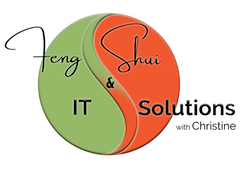Why does a Website or an Webshop have more visitors if they were built according to the principle of Feng Shui?
There are many ways to bring Feng Shui into your home, but does have anything to do with your website?
There are 5 main areas of your website that are prime topics for a Feng Shui style tune-up!
The home page
Think of the home page as the front door of the house. The front door is important in Feng Shui, and so it is with websites. A spacious, clean, and well-maintained home page is like stepping into a home. Immediately there is a clear picture of the overall tone, style and message.
Take a look at classic houses or mansions of the past. Foyers were (and still are!) typically designed to draw your eye to something the architect or designers wanted to show, such as a B. a stunning chandelier or a grand staircase. Homepages work the same way.
The header and the footer
I like to think of a header and footer as the front and back walls of a house, or as two bookends enclosing digital space.
Basically, a header and footer starts and ends the energy of the website. It’s like the bread on a Croque monsieur. The sensible use of these areas therefore contributes enormously to the stylistic design and flow of your website.
Optimising the use of your header and footer for continuous movement but also as a boundary is the way to go. It’s like reaching the fence of an amusement park (a boundary) and finding a map posted nearby encouraging further trips through the park or even the next few steps from the park.
Matching Text and Images
How to design your website according to the principle of Feng Shui?
Because a website is essentially flat objects on a screen, the same rules for spacing and balance apply as when decorating a wall in your home.
Just like choosing flavours in cooking, text and images should work together, not compete against each other. How would you present these objects if they were wall decoration?
For written content, think of a magazine spread. In magazine articles, photos are often linked to text so that the text can be read without interruption. This way, the reader is not disturbed by page turning or scrolling, but can enjoy the photo alongside the story presented.
Clear navigation
Navigation is so important because it encompasses the whole subject of how easy it is to navigate your site! Think of it this way: Is your website closed and confusing like the Winchester Mystery House? Or is it airy and open like a classic beach bungalow?
Clear navigation should be simple, easy to understand and meaningful. How else are your visitors supposed to know where all the fun stuff is happening?
You may know your website like the back of your hand, but your visitors don’t. So make sure your navigation menus are easily recognisable.
These options can be arranged horizontally, in drop-down columns, or even in a clickable hamburger menu. All in all, just find the style that suits you best (and that doesn’t feel terribly like stepping into a pleasure house!)
Colour and coordination
Just like coordinating outfits, coordinating the colours and fonts on your site is a way of setting the overall tone, mood, and mission of your site.
Mix and match fonts that stand out, such as B. a sans serif and a serif font. Make the text easy to read and match your brand’s feel and consistency, just like your colours.
In terms of colours, choose those that flow together and that really suit you! Taking this a step further (you Feng Shui master, you) there are actual colours that correspond to the 5 Chinese elements. For example, if you have a health and wellness website, a shade of green would be a great colour choice to use as one of your main colours.
